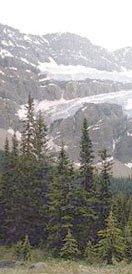|
NRCan Home > About Us > Trailblazers > Diamond Jenness

Trailblazer
Diamond Jenness
1886–1969
Ethnologist, Anthropologist, Arctic Scholar
Geological Survey of Canada
(GSC), 1912–19
Pioneer anthropologist
Diamond Jenness is recognized as Canada's pre-eminent pioneer anthropologist.
He documented Aboriginal life in Canada's North, the Inuit of the western
Arctic, and First Nations communities across Canada. His contributions
to the knowledge and understanding of Canada's native peoples earned him
national and international distinction.
Diverse education and experience
Diamond was born in Wellington, New Zealand, on February 10, 1886. After
graduating from Victoria College in Wellington in 1908, he studied at
Oxford University, receiving a master's degree in anthropology in 1916.
As part of his studies at Oxford, he led an expedition to New Guinea
to study the d'Entrecasteaux Islanders in 1911 and 1912. But one of his
greatest experiences would begin on his arrival in Canada in 1913.
Surviving the Canadian Arctic Expedition
The 1913–16 Canadian Arctic Expedition, directed by the GSC,
was the first major scientific exploration of Canada's Arctic. Led by
renowned Arctic explorer Vilhjalmur Stefansson, the expedition would explore
the northern and western parts of the Arctic. Diamond was one of two ethnologists
with the expedition.
The cruel Arctic weather intervened in the exploration's first year,
and the main expedition ship, Karluk, became frozen in the ice.
While Stefansson, Diamond and four others were ashore hunting caribou,
ocean currents carried away the ship. Surviving expedition members were
forced to abandon the Karluk when it was subsequently crushed
by ice. Henri Beuchat, the other ethnologist, was one of the 13 men who
perished in the tragedy.
The People of the Twilight
With Beuchat's death, Diamond performed the work of two men, spending
the next several years studying the Copper Inuit of Coronation Gulf. He
became fluent in Inuktitut and recorded hundreds of drum dance songs,
poems, legends and stories on wax phonographic cylinders. He also carefully
documented the Copper Inuit's daily life. Diamond's book, The People
of the Twilight (1928), is still regarded as one of the best sources
of information on the life of a nomadic, indigenous people.
The legacy
Finally hearing news of World War I, the GSC
expedition survivors returned south in July 1916. Diamond served with
the Canadian field artillery as a gunner, from 1917 to 1919. After the
war, he returned to Ottawa to complete his Arctic reports and begin his
career with the National Museum of Natural Sciences (now known as the
Canadian Museum of Nature).
From 1926 to his retirement in 1948, Diamond was Chief Anthropologist
of the museum. He uncovered evidence of prehistoric Inuit cultures at
excavations on Baffin Island and in Alaska, which he named the "Dorset"
and "Old Bering Sea" cultures — fundamental discoveries
in explaining migration patterns.
| 
Copper Eskimos, Canadian Arctic Expedition, 1915
|
Diamond spent his life studying and writing about Canada's Aboriginal
peoples — producing more than 100 titles, including The
Copper Eskimo (1923), The Indians of Canada (1932), The
Corn Goddess and Other Tales from Indian Canada (1956) and Dawn
in Arctic Alaska (1957). All are still recognized as influential
works on Canada's native peoples.
During his illustrious career, Diamond received six honorary doctoral
degrees and numerous prestigious awards, including the Companion of the
Order of Canada. He died near Ottawa on November 29, 1969.
Diamond Jenness Peninsula on Victoria Island in the Northwest Territories
is named for him.
Life achievements
- 1911 — Graduated from Oxford University.
- 1911–12 — Led anthropological expedition to New
Guinea.
- 1913–16 — Ethnologist on Canadian Arctic Expedition
- 1926 — Chief Anthropologist at the National Museum of
Natural Sciences
- 1937 — President of the Society for American Archaeology
- 1939 — President of the American Anthropological Association
- 1940 — Deputy Director of Intelligence for Royal Canadian
Air Force
- 1962 — Awarded the Massey Medal from the Royal Canadian
Geographical Society.
- 1962–68 — Arctic Institute of North America issues
his five volumes on Eskimo administration in Alaska, Canada and Greenland.
- 1969 — Appointed Companion of the Order of Canada.
More Trailblazers
|


